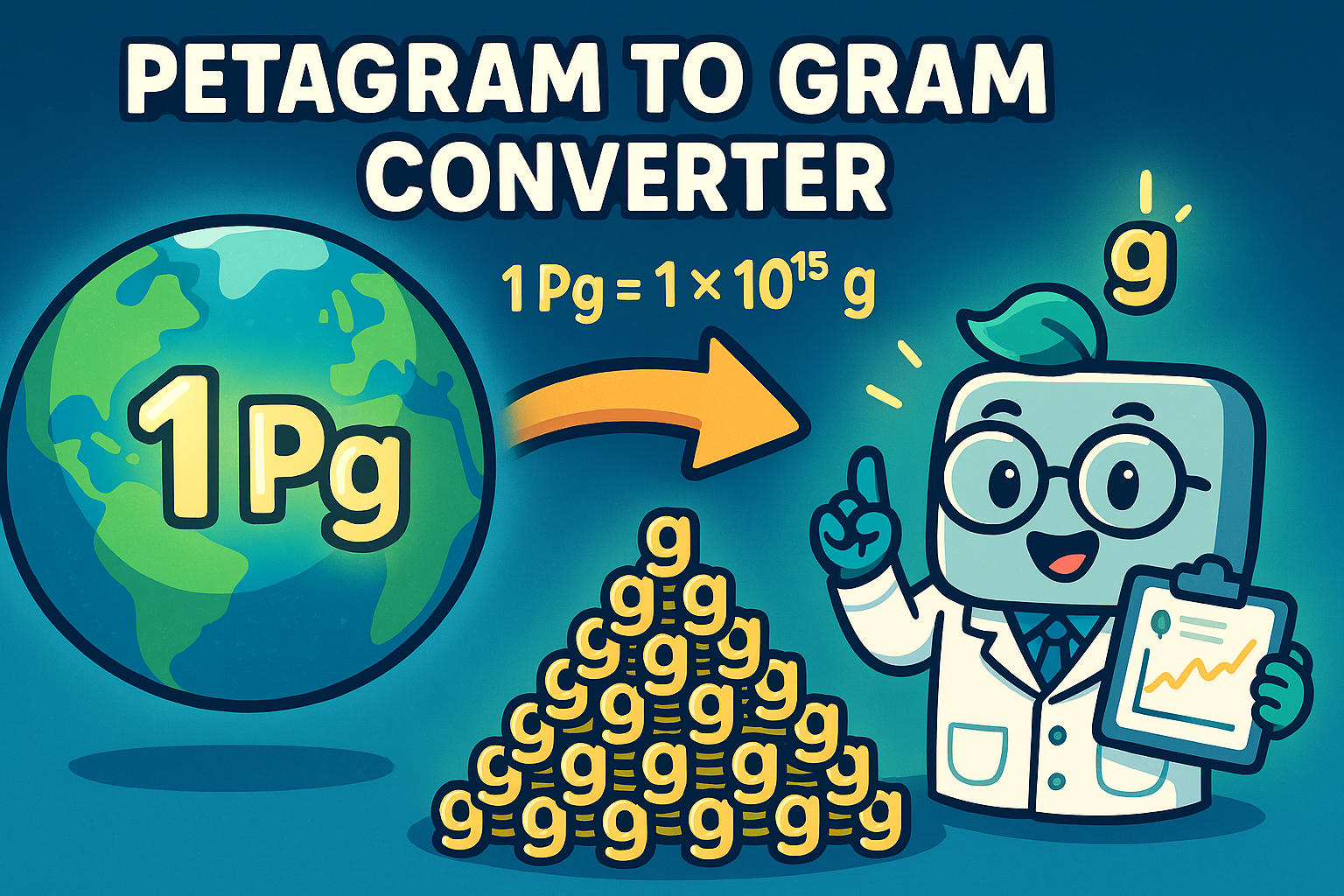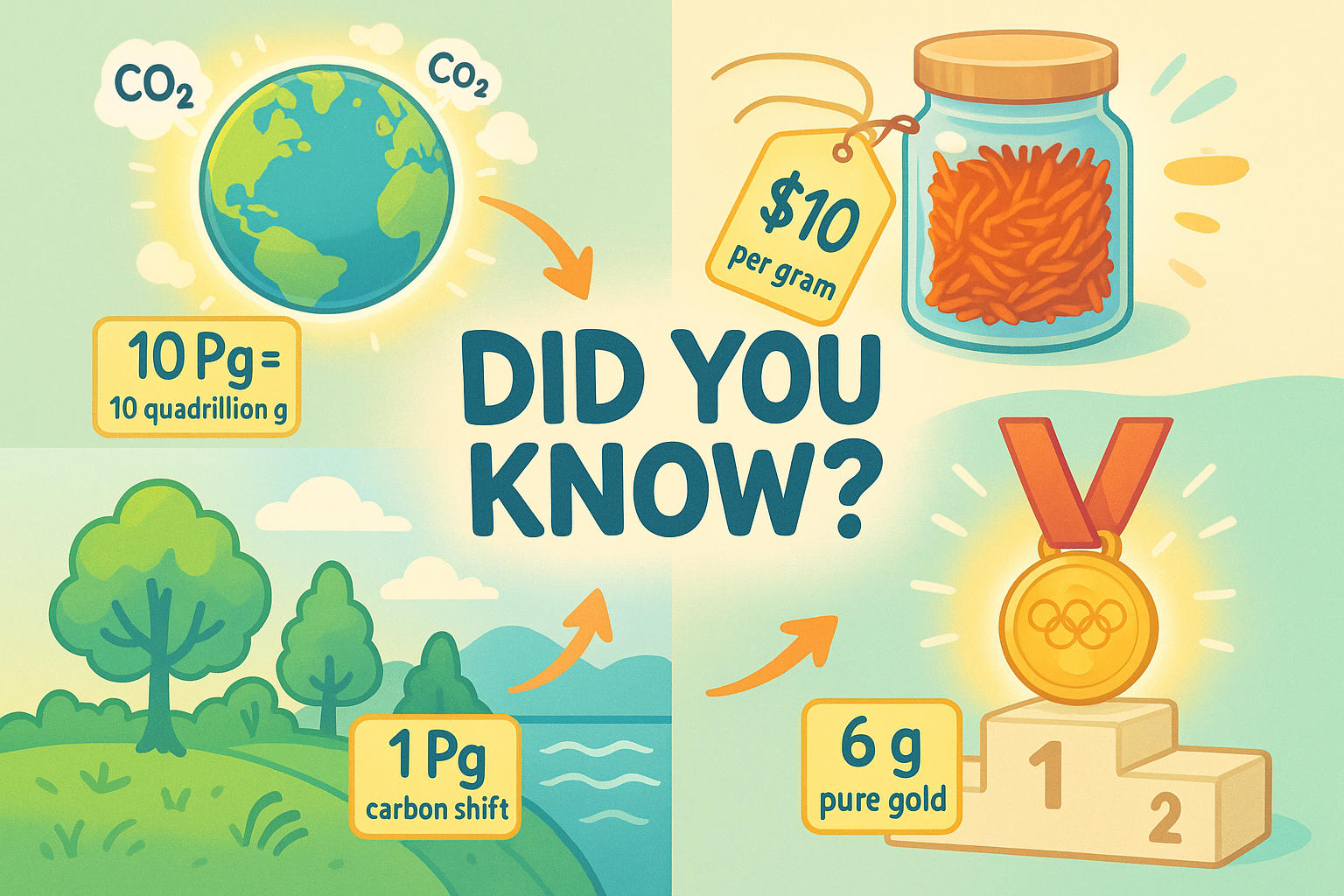petagram to gram - How to convert Pg to g
When you're dealing with large-scale environmental data, global production volumes, or planetary science, converting petagram (Pg) to gram (g) becomes vital. This guide breaks down both units, their significance, and how to perform this large-scale conversion accurately.

What is a Petagram?
A petagram (Pg) is a metric unit of mass equal to 1 quadrillion grams, or 1 × 10¹⁵ grams.
The petagram is often used in:
-
Climate science (e.g., global carbon emissions)
-
Geological data
-
National resource inventories
-
Planetary and astronomical calculations
For example, annual global carbon dioxide emissions are often measured in petagrams.
What is a Gram?
A gram (g) is a standard unit of mass in the metric system. It's used daily across the world for:
-
Measuring food
-
Scientific lab samples
-
Pharmaceuticals
-
Precious metals and materials
The gram is the go-to unit for personal, scientific, and commercial mass measurements. Convert to and from grams easily using our full weight converter.
How to Convert Pg to g
Converting is as simple as multiplying:
grams = petagrams × 10¹⁵
Examples:
-
1 Pg = 1,000,000,000,000,000 g
-
0.005 Pg = 5,000,000,000,000 g
Jetcalculator’s conversion tools help you perform these calculations instantly without worrying about long strings of zeros.
Did You Know?
-
According to the Global Carbon Project, humans emitted over 10 Pg of CO₂ in a single year. That’s 10 quadrillion grams of carbon released into the atmosphere.
-
The world’s most expensive spice, saffron, often sells for over $10 per gram, making this small unit critically important in gourmet pricing.
-
In climate modeling, a change of just 1 Pg of carbon in global ecosystems (like forests or oceans) can dramatically affect long-term climate projections.
-
Olympic gold medals are made mostly of silver and only coated with about 6 grams of pure gold—a small weight, but symbolically priceless.
Tracking Carbon by the Petagram
In NASA’s Earth Science program, petagrams are used to track global carbon movement between the atmosphere, oceans, and land. For example, the Amazon rainforest absorbs and releases carbon on a scale of over 1 Pg per year. A 2015 study showed that droughts and deforestation may reduce this carbon sink capacity, turning it into a net emitter instead.
Such studies rely on ultra-large unit conversions, where the petagram becomes essential in understanding and communicating global environmental changes.

Conclusion
Converting petagram to gram (Pg to g) isn’t something most people do every day—but for scientists, climate analysts, and researchers, it’s crucial. With 1 Pg equal to 1 quadrillion grams, Jetcalculator simplifies the math so you can focus on what matters: understanding and managing massive data.

